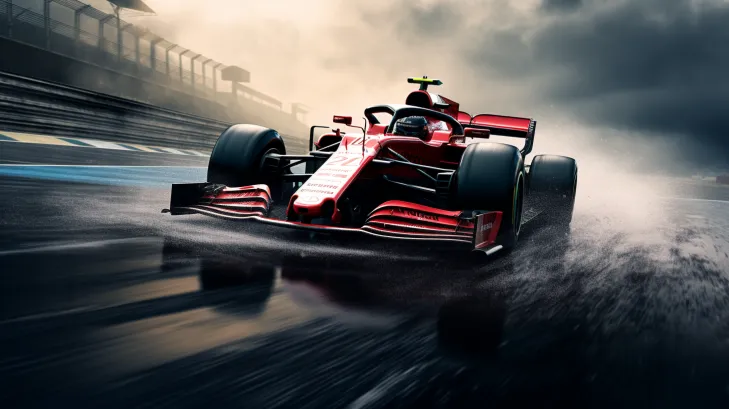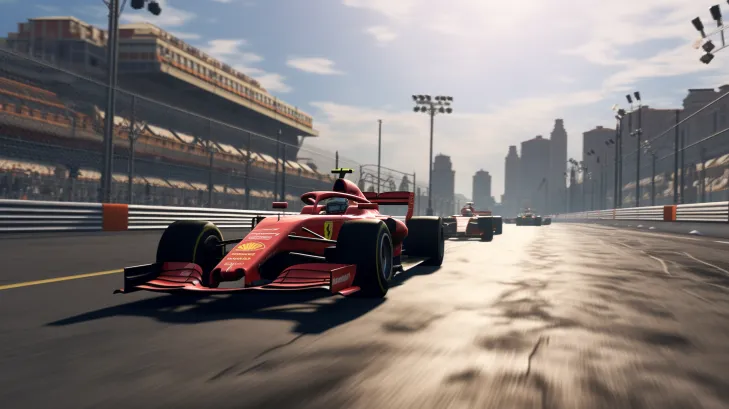Table of Contents
In Formula 1 AI, achieving success can be determined by minuscule measurements of time and distance. Drivers are well-versed in taking precise lines around corners to achieve the best lap times. However, there are instances where racers may go beyond the boundaries in an attempt to gain an edge.
To aid officials in verifying if a car’s wheels have completely crossed the white boundary line, Formula 1 will be experimenting with an AI system.
In an effort to enhance the efficiency of track limit checks, the FIA will implement a program called ‘Computer Vision’, which utilizes shape analysis.

Enhanced Efficiency with Formula 1 AI Implementation
According to the FIA, the utilization of technology will enhance its efficiency in reducing the number of incidents that necessitate human intervention for final checks.
Tim Malyon, the leader of the ROC, expressed that the utilization of AI primarily revolves around employing the system to disregard incidents that do not necessitate human judgment.
In an FIA preview, he expressed, “Currently, we have employed a brute force approach to tackle the situation, where we are required to conduct thousands of checks. How can we effectively accomplish this task?”
The Fédération Internationale de l’Automobile (FIA), the governing body of motorsport, has announced its intention to utilize Computer Vision technology during the Abu Dhabi Grand Prix, which marks the end of the season. By employing shape analysis, this innovative approach aims to accurately calculate the number of pixels that intersect the boundary line of the track.
Once again, it may appear peculiar, but the approach employed by this AI bears numerous resemblances to ongoing discussions in the field of medicine. For instance, Computer Vision is being utilized to analyze data obtained from cancer screening, which aligns with the methodology employed by this AI.
Balancing Automation Formula 1 AI’s Targeted Rule Inspection
At present, Formula 1 AI has no intention of completely automating the process of reviewing track limit violations. Instead, it aims to minimize the amount of rule infractions that require manual inspection by officials.
Malyon stated that the objective is to decrease the number of 800 reports that are expected from a grand prix to 50, making it more manageable for the Formula 1 AI personnel to handle.
According to Reuters, around 1,200 potential violations were reviewed by four individuals during the Austrian Grand Prix in July. Following the occurrence of unpunished track limit violations during the US Grand Prix in October, officials recognized the need for a fresh approach. This is where Computer Vision comes into play.
Formula 1 AI technology has been employed in the field of medicine to assist in analyzing information obtained from cancer screenings. According to Tim Malyon, the Formula 1 AI deputy race director and head of remote operations, the purpose of utilizing Computer Vision is not to diagnose cancer but rather to eliminate the 80 percent of cases where cancer is clearly absent. This allows the well-trained professionals to allocate more time to examine the remaining 20 percent.
This is the primary objective we are aiming to achieve.

Expanding Operations Formula 1 AI’s Future Automation Strategy
Currently working on enhancing the precision of car positioning. Additionally, we have plans to expand the ROC by increasing the number of individuals from four to eight next year. Furthermore, we aim to double the connection bandwidth between the track of Formula 1 AI and Geneva to enable more individuals to work remotely.
Formula 1 AI aims to decrease the number of potential violations that officials manually assess to approximately 50 per race. Malyon stated that the objective is to “eliminate those that evidently do not require human scrutiny.”
Although Formula 1 AI does not currently plan to fully depend on AI for race calls, Malyon anticipates that it will happen in the future. “I have consistently mentioned that humans are currently prevailing in certain aspects. While that may be true for now, we firmly believe that real-time automated policing systems are the future.”